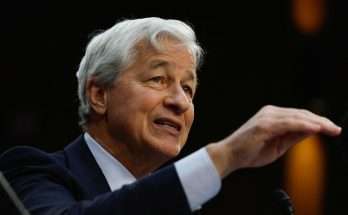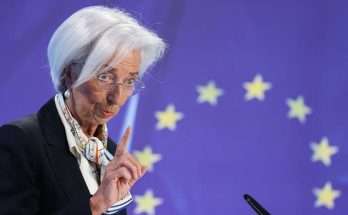
Inflation rose in line with expectations in January, according to an important gauge the Federal Reserve uses as it deliberates cutting interest rates.
The personal consumption expenditures price index excluding food and energy costs increased 0.4% for the month and 2.8% from a year ago, as expected according to the Dow Jones consensus estimates. The monthly gain was just 0.1% in December and 2.9% from the year prior.
Headline PCE, including the volatile food and energy categories, increased 0.3% monthly and 2.4% on a 12-month basis, also as forecast, according to the numbers released Thursday by the Commerce Department’s Bureau of Economic Analysis. The respective December numbers were 0.1% and 2.6%.
The moves came amid an unexpected jump in personal income, which rose 1%, well above the forecast for 0.3%. Spending decreased 0.1% versus the estimate for a 0.2% gain.
January’s price rises reflected an ongoing shift to services over goods as the economy normalizes from the Covid pandemic disruptions.
Services prices increased 0.6% on the month while goods fell 0.2%; on a 12-month basis, services rose 3.9% and goods were down 0.5%. Within those categories, food prices accelerated 0.5%, offset by a 1.4% slide in energy. On a year-over-year basis, food was up 1.4% while energy fell 4.9%.
Both the headline and core measures remain ahead of the Fed’s goal for 2% annual inflation, even though the core reading on an annual basis was the lowest since February 2021. While the Fed officially uses the headline measure, policymakers tend to pay more attention to core as a better indication of where long-term trends are heading.
CHICAGO, ILLINOIS – FEBRUARY 13: Customers shop at a grocery store on February 13, 2024 in Chicago, Illinois. Grocery prices are up 0.4% from December and 1.2% over the last year, the slowest annual increase since June 2021. (Photo by Scott Olson/Getty Images)
Scott Olson | Getty Images News | Getty Images
“Overall, [the report] is meeting the expectations, and some of the worst fears in the market weren’t met,” said Stephen Gallagher, chief U.S. economist at Societe Generale. “The key is we’re not seeing the broad nature of increases that we had been more fearful of.”
Wall Street reacted little to the news, with stock market futures up slightly and Treasury yields slightly lower. Futures markets where traders bet on the direction of interest rates also indicated little movement, with pricing tilted toward the Fed’s first rate cut coming in June.
Atlanta Fed President Raphael Bostic said the recent data shows the road back to the central bank’s 2% inflation goal will be “bumpy.”
“They’ve come in higher than people hoped, but if you look over the long arc, the line is still going down,” he told an audience at a banking conference in Atlanta. “That’s an important thing to keep in mind.”
Like Bostic, Chicago Fed President Austan Goolsbee, also speaking Thursday, said he expects rate cuts later this year but didn’t specify when. Bostic said he expects the first cut in the summertime.
Thursday’s BEA report also showed that consumers are continuing to dip into savings as prices stay elevated. The personal savings rate was 3.8% on the month, slightly higher than December but off a full percentage point from where it was as recently as June 2023.
In other economic news, a Labor Department report showed that companies are still reluctant to lay off workers.
Initial jobless claims totaled 215,000 for the week ended Feb. 24, up 13,000 from the previous period and more than the 210,000 Dow Jones estimate but still largely in keeping with recent trends. However, continuing claims, which run a week behind, rose to just above 1.9 million, a gain of 45,000 and higher than the FactSet estimate for 1.88 million.
The reports come as central bank officials mull the future of monetary policy following 11 interest rate increases totaling 5.25 percentage points. Running from March 2022 to July 2023, the hikes came as the Fed battled inflation that peaked at a more than 40-year high in mid-2022.
Officials have said in recent days that they expect to begin reversing the increases at some point this year. However, the timing and extent of the policy easing is uncertain as recent data has indicated that inflation could be more stubborn than expected.
“Hot January inflation data adds to uncertainty and pushes back rate cut expectations,” said David Alcaly, lead macroeconomic strategist at Lazard Asset Management. “But odds remain that this is a speed bump and that, while there may be additional short-term swings in market narrative, it will ultimately matter more how deep any rate cutting cycle goes over time than when it begins.”
January’s consumer price index data raised fears of persistently high inflation, though many economists saw the rise as impacted by seasonal factors and shelter increases unlikely to persist.
While the CPI is used as an input to the PCE, Fed officials focus more on the latter as it adjusts for substitutions consumers make for goods and services as prices fall. Where the CPI is viewed as a simpler price measure, the PCE is viewed as more representative of what people are actually buying.
Don’t miss these stories from CNBC PRO:


